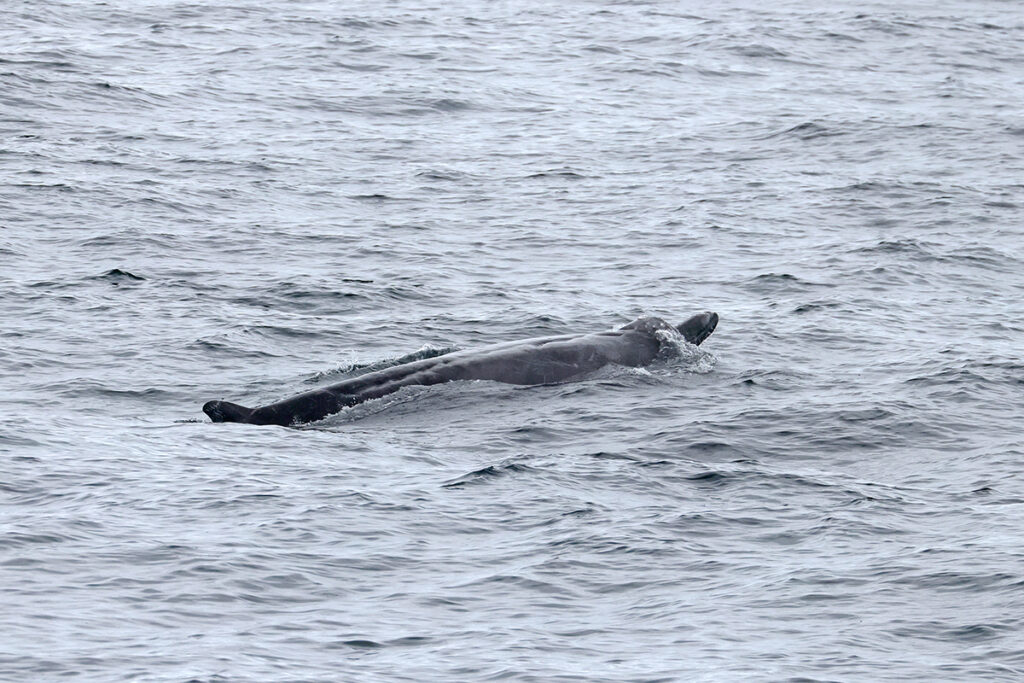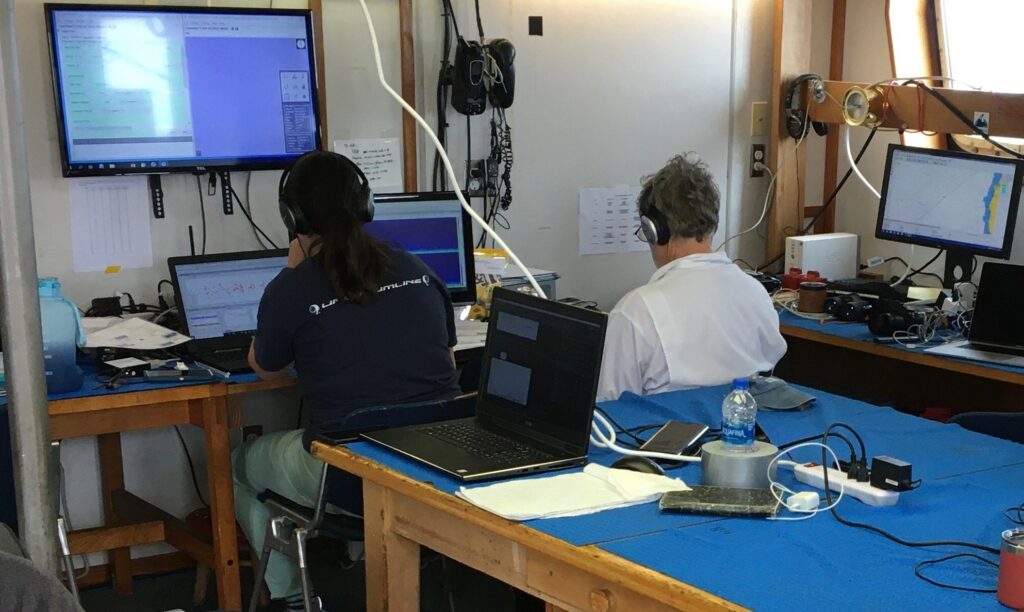(This post was originally published September 20, 2021. Posts have been manually reordered for more logical storytelling. To go to the next post in the sequence, click “Previous Post” at bottom.)
“I have small puffy blows here,” Ladd casually remarks while scanning the ocean horizon with our high-powered “bigeye” binoculars. Intrigued, I immediately swing my own pair of the heavy binoculars over to his patch of water. Like whalers of old, modern trained observers often can tell the species of whale seen at a distance by the size and shape of its blow. Judging by the cluster of round-shaped blows erupting above the calm water like exploding fireworks two miles out in front of the ship, I knew we were seeing something special.
“Baird’s beaked whales!” I shout, barely able to contain my excitement. Baird’s beaked whales are named after the Smithsonian Institution’s first curator, Spencer Fullerton Baird, and they are the largest member of the beaked whale family, reaching lengths of nearly 40 feet and weights of 13 tons. They are rarely observed at sea.

Judging by the constant blows, we estimate that there are at least 12 whales packed tightly together at the surface. After only a minute or so, the blows suddenly stop, and the whales disappear. From our vantage point 30 feet up in the crow’s nest, we radio down to the acoustic team monitoring the underwater hydrophone being towed a hundred meters behind the Pacific Storm. “Baird’s beaked whales! Twenty degrees right and 2.3 nautical miles from the ship.” A moment of disbelief on the other end is followed by, “That’s great! We’re on it.”
Like bats, beaked whales produce high-frequency clicks while foraging. We know from a high-tech digital acoustic tag placed on a Baird’s beaked whale off California nearly ten years ago that the species makes a series of shallow dives (if you can call diving to 400 meters “shallow”) followed by an extended, deeper foraging dive to over 1,000 meters, which can last as long as an hour and a half. It is typically only during deeper dives that Baird’s beaked whales produce their characteristic clicks as they search for prey.
After ten minutes, the acoustic team radios back up to us and states that they are not hearing anything on the hydrophone, suggesting that the whales are making a silent, shallow dive. Ladd and I continue to scan the ocean, joined now by several other members of the science team and crew, each of us eager to spot these unusual whales again.
A half an hour passes and still no sign of the whales. There is a reason beaked whales are among the least known species of mammals on the planet. Finally, 33 minutes after last seeing the whales at the surface, we spot their distinctive blows again, one mile directly ahead of the ship. Two minutes later, the blows suddenly stop and the whales disappear once again. Acoustics radios up soon after and states that they are still not hearing them. Another shallow dive.
The whales seem to be moving steadily to the north, and this time we position the Pacific Storm a mile in that direction. After 23 minutes, the whales surface once again, this time just a few hundred meters away. We all scramble for our cameras as the whales provide us with an extraordinary view of their backs and heads. Gigabytes of photos are taken as well as nearly four minutes of video footage. After five minutes at the surface, the whales arch their backs high out of the water and make an obvious steep dive, powering down into the depths.

A few minutes later, the acoustic team excitedly radios up, “We have clicks!” The Pacific Storm stays in the area for over an hour, through an entire foraging dive, and more than 31 minutes of high frequency clicks are recorded.
As is so often the case with beaked whales, we are unable to relocate the whales after they surface from their deep dive. Nevertheless, the encounter has provided us with an abundance of visual and acoustic data that will help shed some light on the mysterious lives of these incredible animals.
~Todd Pusser